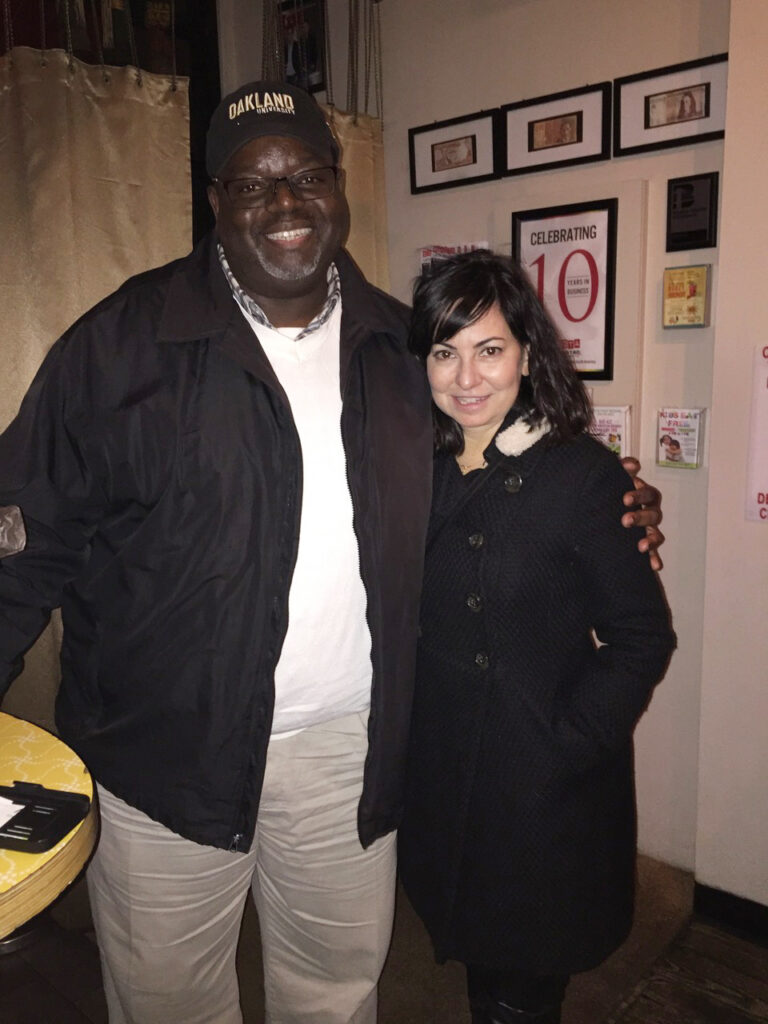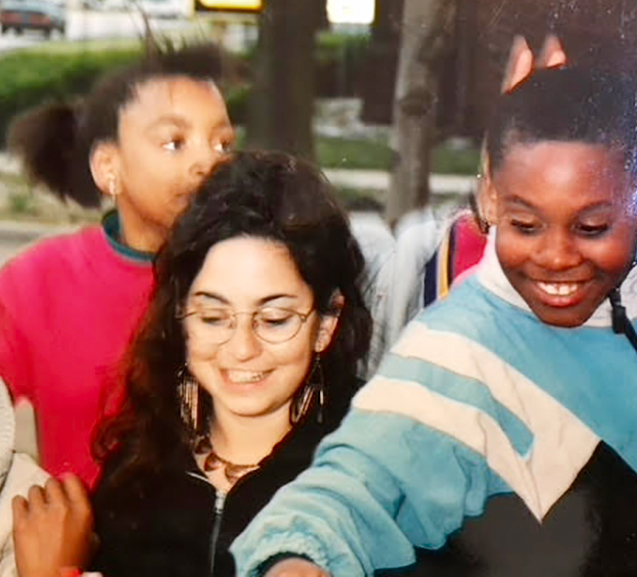Bree Picower first volunteered at Peace Neighborhood Center in 1991 during her freshman year at the University of Michigan—to fulfill a community service component for a class she was taking during her second semester. Though she doesn’t remember the particulars of that class, she definitely remembers her experience, and ended up working at Peace throughout her four years at Michigan.
Today, Bree Picower is a nationally recognized educator who trains teachers across the country and is published widely in academic journals. As a Professor at Montclair State University in the College of Education and Human Development, Bree’s scholarship focuses on issues of race, racism, and education. She credits Peace Neighborhood Center and all that she learned from Bonnie Billups and her summer camp colleagues with helping to shape both her perspective on race and the trajectory of her career.
In reflecting back on how Peace helped shape her career, Bree shares:

“When Bonnie [Billups] first came to our class to introduce Peace Neighborhood Center, he made a big impression on me. The way Bonnie talked about Peace and what he talked about were very different from my experiences volunteering at agencies in New York City that served Black kids, but were run by white adults.
During my first semester volunteering at Peace, I helped coordinate art activities for the after-school program. Bonnie noticed that I came with ideas, and asked me to stay on working as a Summer Camp Counselor. I loved it! I loved being accepted at Peace and ended up working there during my entire four years at Michigan.
As a Women’s Studies major, I became more interested and focused on education and inequity, a lot of it shaped by my experience working at Peace. I got to see all that I was learning in my U-M classes play out in my work at Peace.
Back then, I had the opportunity to connect with Peace kids’ teachers. I noticed that when talking about Peace kids, teachers tended to frame things as “deficits” and used more negative descriptions. I saw how Peace kids’ self-esteem dropped while at school compared to [how they felt] while at Peace. The schools gave them fewer opportunities; many were automatically put into special education classes. At school, you could actually see how Peace kids were segregated and were often the only black students in the school. It seemed their teachers were separating them for ‘not conforming’ to white middle class norms. Seeing what kids of color faced every day in school was a huge education for me, and sent me on a trajectory to help teachers change their ideas about race.
While working at Peace, you really were part of an extended family. Many of the parents served the center in different ways. All were so special, so welcoming. They made me feel like part of the family. Kevin Hudson, Yusef Jones, and Charles Agnew adopted me as their little sister. This was in the early 90’s, a racially tumultuous time with the Anita Hill hearing, Rodney King beating, and OJ Simpson trial. To witness these events alongside them and to hear the unfiltered responses from the people around me all helped shape my understanding of multiple perspectives.”
After graduating from UM, Bree moved to California to work for an educational nonprofit in the Bay area focused on racial justice work with different kinds of teachers. She then started teaching at a public school in Oakland with predominantly Black teachers and administration. In 2001, she moved back East to teach at a public school in New York City, and went on to earn a PhD in teaching and learning. Her dissertation focused on how white teachers conceptualize students of color in urban communities.
 “Peace is where I learned how to teach; where I learned how to think. They gave us so much in terms of learning experiences. Bonnie trusted us. My experience [at Peace] shaped me as a classroom teacher, and helped set me on my career path in teacher education. The language at the time was focused on the ‘Achievement Gap’. Working at Peace taught me to flip that idea—to better understand what it is that teachers do that gets in the way of kids’ learning? The insights I gained while at Peace led me to want to study and understand that more.
“Peace is where I learned how to teach; where I learned how to think. They gave us so much in terms of learning experiences. Bonnie trusted us. My experience [at Peace] shaped me as a classroom teacher, and helped set me on my career path in teacher education. The language at the time was focused on the ‘Achievement Gap’. Working at Peace taught me to flip that idea—to better understand what it is that teachers do that gets in the way of kids’ learning? The insights I gained while at Peace led me to want to study and understand that more.
“I have nothing but the best memories of my time at Peace Neighborhood Center. I am so grateful to Peace. I would not be me, would not be the person I am today, without Bonnie and all I learned from him. When I reflect back on my work and the opportunities I’ve had, my time at Peace was a major influence.”
